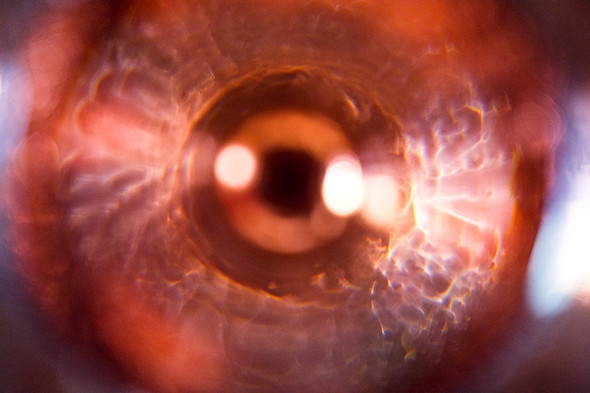Surprising as it may be, rosé profanely refers to colour, in other words to the fact that our wine in the glass/bottle/container exhibits a pink colour or, at least, one of its tinges. Just to give a hint to my colour blind male peers: according to women pink has several dozens of tinges. So it behoves to those who wish to be adept in wine to recognize some of these or at least to learn them by rote so that you can give it a chance and echo them from time to time to see if it pays off. Just give it a thought, the colour of a classical piglet is pink, just as that of a duck breast in Michelin star restaurants, but we can also mention rhododendrons, some silene species, the strawberry parfait, the rose jam and then there are the pink bonbon, the pink panther, pink wall paints, the Barbie dolls and mature ham.
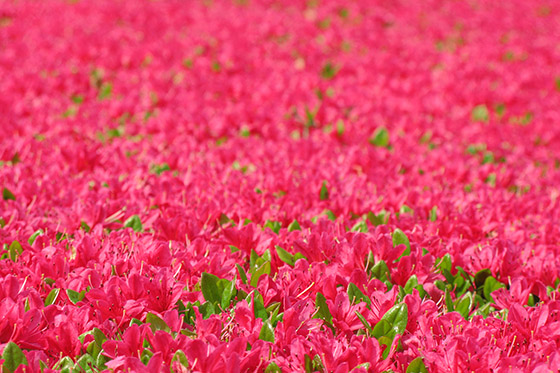
And it is a unique perversion of Hungarian winos to tag certain rosé wines as having onion skin colour. This in fact is a booze having a colour similar to that of the juice of onion skin, nevertheless sometimes it actually fits the wine well. And talking of pink, I have once seen an old lady wearing a pink kerchief in Laos but maybe it does not count. Anyhow, pink things are fashionable (see female handbags), tasty (Oh those delicious hams!) and nice as most flowers. Consequently, rosé wines are also fashionable, nice and tasty, but beware of selecting only by the looks or as the famous child of a real estate agent said: decipimur specie recti. But let’s not run so far ahead, we are still with the colour, which, as we have mentioned above, is quite a complex issue. How does a wine become pink? First of all its raw material must be blue grape. Let’s stop here for a stunned moment and have a suspicious look at the Tokai rosé swirling in our glass. It is not impossible but not too likely either. So rosés should preferably originate from wine regions where blue grapes not only decorate codices but actually grow on the lands. This also applies to rosé coming from such Terra Incognita where mixing white and red wines is allowed by the wine law for creating rosé. This barbarous process is, fortunately, prohibited in Europe and we have the good old method. But what is it? Given the blue grape with its skin full of pigments (among others) and then comes the winemaker who crushes the grape and leaves the wet mass to itself and soon red wine starts to trickle and ferment. However if the crushed skin is relatively rapidly removed from the rather uninviting stuff (short skin contact as it is referred to in the literature), the wine does not have the time to become red and will remain only pink.
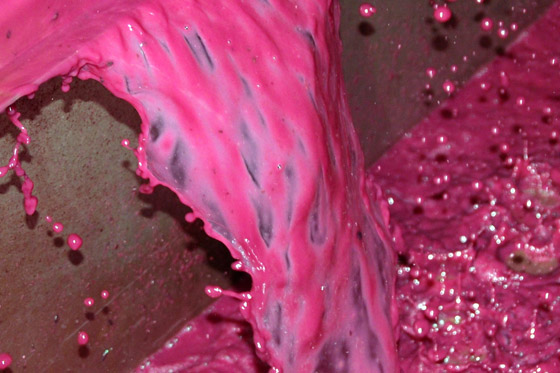
A logical conclusion of the above is that if the juice of blue grape is immediately separated from its skin, the result will be white wine and indeed (!), no tricks certain white kadarka available on the Hungarian market were (hopefully) made this way and not in secret underground laboratories. So far the formula is clear, however there is a twist in the story. In a rosé, the northern peoples – such as we – are looking for freshness, tooth-eroding acids, low alcohol content and off-season fruits – or the yeast strain evoking such sensations – and all these served immediately and properly chilled and consumed on a shady waterside patio. So much so that even average consumers who cannot truly be called acquainted in depth with wines are about to learn that only the actual vintage, i.e. -1st vintage is the right thing and even supermarkets can’t chose but to give discounts on two-year old rosés, though a couple of years ago selling four-year old rosés had been a plain sailing. Well, life is hard. Such rosés are born in steel tanks and wine makers are careful not to let them have contact with oxygen until the future consumer pops the cork or twists off the cap. For a genuinely fresh sensation, such wines are sometimes enriched with carbonic acid causing a slight tingling on the tongue that people love. It offers a soft refreshment for the hot summer days replacing beer, at least at posh places. The situation on the south though is different. On the French-Italian-Spanish axis rosés have lower acidity and if we were mean (which we are not) we would say it is natural since that boiling hot climate burns out the acid in those wretched grapes; acids could not be preserved unless harvest would take place in May, but even these people are not capable of that; no laboratories worth billions would be able to make wine out of it provided they wanted to use grape for that purpose. Therefore Mediterranean style rosés are not that fresh (and are less chilled), their taste is often dominated by minerals and a soily flavour besides or instead of fruits and – what a sacrilege – at some places wines are stored in casks where they are exposed to oxygen. In Sacha Lichine’s winery though, cooling wires were installed in casks, therefore their wines are an interesting combo of the two schools pushing the price of a single bottle of rosé up to twenty thousand Hungarian forints. Recommended to those having two mums or unlimited amounts of money. For this reason, at the biggest world rosé competitions (yes, such competitions do exist) the mainly French-Italian-Spanish judges prefer the Mediterranean style and the German and Hungarian sea of rosés make their tooth lost. Quite frequently Hungarian wine makers tell under their breath to wine writers that their wine awarded with a gold medal is not their best rosé, but what can they do, that is what the foreign judges liked though it has milder acids than it is supposed to have and is less fruity than last year.
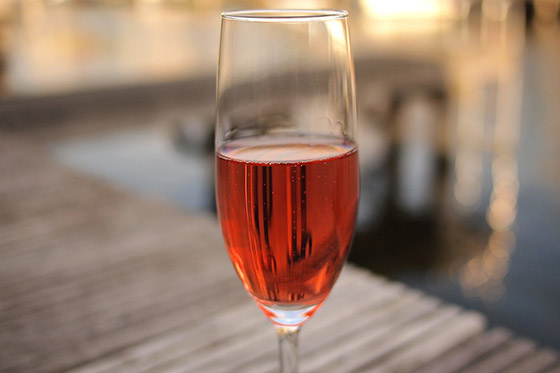
There also exist semi-sparkling and sparkling rosés and others that were made stronger (gym-type) but I spare my dear readers from this since the chapters to follow will elaborate on it. But then it is worth reviewing what the Pannonian ideal of a rosé is, when should we exultantly cry: Eureka! and purchase two or three boxes and sip it up before 31st August when we will strictly switch to white ones. A good rosé has a pink/ raspberry syrup/ onion skin colour, it is not authoritative though, but if it is rather dark then it is a Schiller wine and if it is even darker then a red wine, so we have been cheated, let’s contact consumer protection. From the glass, the smell of strawberry, wild strawberry, raspberry, sour cherry and cherry is floating, it’s a free association game, though it must be red, blackberries and alike are strange in a rosé so it’s time to be suspicious again. Beyond these, in extreme cases, Hungarian rosés are also capable of showing the terroir (a nice French word referring to the trinity of winemaker, soil and climate, in this case we use it rather for the soil). It has a serious and hopefully elegant “acid backbone”, drinking it boosts saliva production and owing to its slight carbonic acid content (if any) it is fresh and refreshing, like a wine spritzer and it is fragrant, soft and round, playful and savoury. It is good if the taste is dominated by fruits, without them rosé is like a dead dog: pitiful creature with a glassy stare.
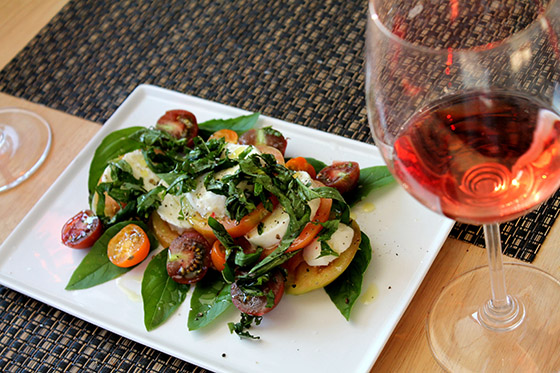
As always the question is: When should we drink rosé? In fact, at any time. True enough, it is the best chilled at summer days and is good for dating especially if our wine matches the colour of the pink handbag of our target mall girl. In such cases a Swarovski glass and some well-selected bonmot are a must to go to bed after, of course, emptying a couple of bottles together. If we do not have such ambitious plans, our rosé may be accompanied by a good salad or maybe by a freshly roasted or grilled fish, pasta and fresh tomato, in other words anything that is just as light as the wine. A steak, no matter how delicious it is, would kill our rosé making it fragrant water beside the tough and bloody shreds of meat. We should rather have a brutal red wine from Argentina but who would desire it in summer when pavement is melting, the air vibrates over the hills and cicadae are howling as jackals – what a mixed metaphor but hey… Fortunately the average quality of Hungarian rosés is high, so in fact we can pick anything over HUF 1000. Below this amount typically imported Italian wines are offered distressing the public with Hungarian labels. Of course there are exceptions but one needs to be lucky for that, so just stay above the said level. And if our sweetheart is not that much of a mall girl or our husband likes full-bodied read wines and our colleagues prefer beer with spirits, then let’s head to the bath tub (of course not with a razor or a hair dryer); a rosé may also be an individual genre, just don’t be serious it may even be harmful to your health...



